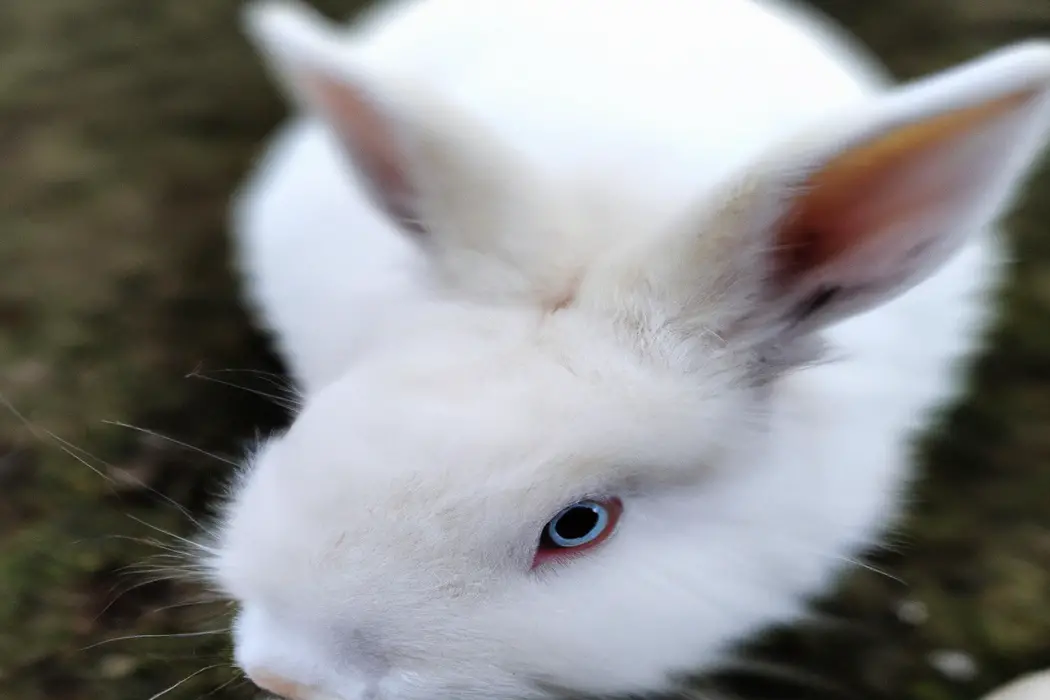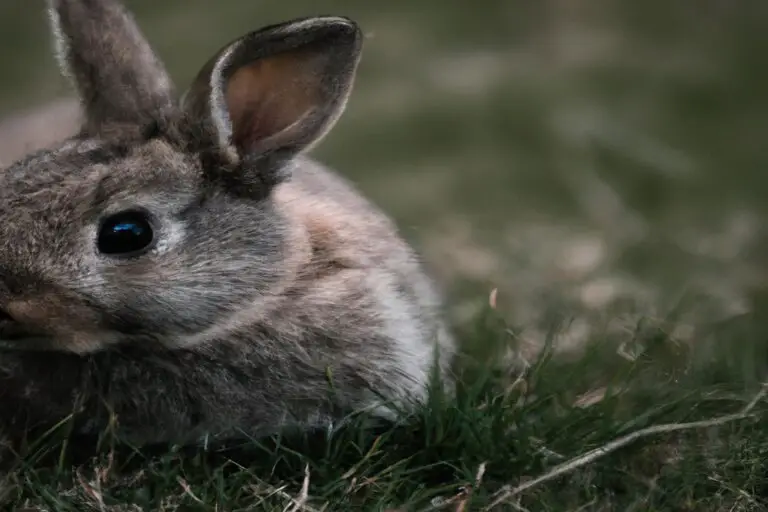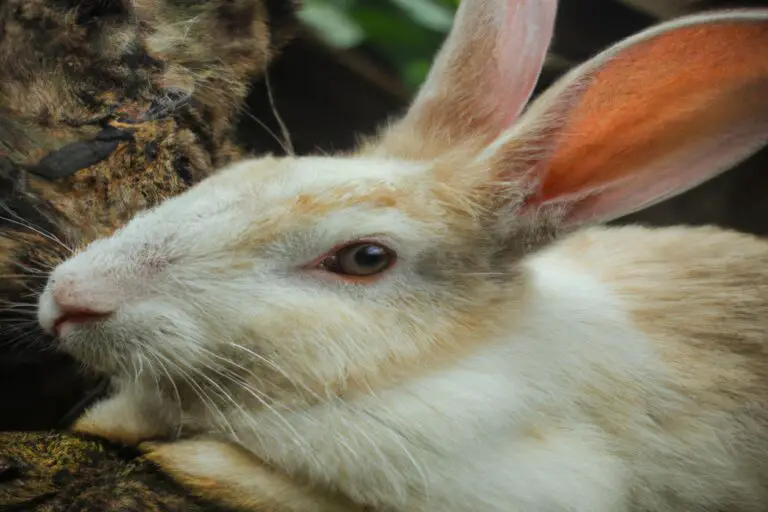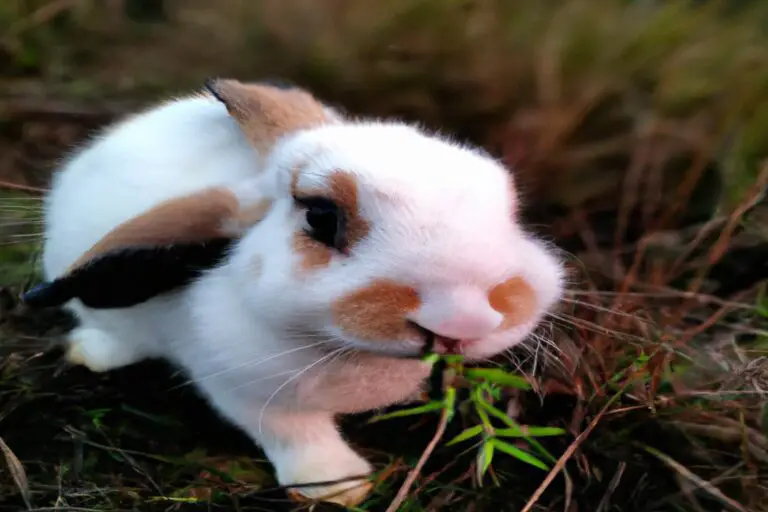How To Keep Rabbit Warm In Winter Outside: Proven Tips and Tricks!
Key Takeaways:
- Provide a well-insulated shelter with plenty of bedding for your rabbit to stay warm during winter months.
- Offer extra layers of protection, such as a waterproof hutch cover or blankets, to shield your rabbit from harsh weather conditions.
- Ensure access to fresh water at all times, using heated water bottles or bowls to prevent freezing.
- Feed your rabbit a balanced diet with additional hay to help generate internal body heat and maintain warmth.
Winter can be a challenging time for our furry friends, especially when they are living outside like rabbits. But fear not! I’m here to share some invaluable tips on how to keep your rabbits warm and cozy during the frosty months ahead.
In this article, you’ll discover the importance of keeping rabbits warm in winter and the risks they face in cold temperatures.
You’ll learn how to create a warm shelter, adjust their diet, and protect them from harsh winds. Plus, I’ll even reveal some extra tips and answer some frequently asked questions about rabbits in winter.
So, let’s dive in and make sure your fluffy companions stay toasty in the chilly weather!
| Methods | Advantages | Disadvantages |
| Insulated hutch | Keeps rabbit warm and protected | May require additional heating |
| Extra bedding | Provides insulation and warmth | Needs regular maintenance and cleaning |
| Snuggly fabrics | Creates cozy spaces and traps heat | Requires careful monitoring and cleaning |
| Heat lamps or pads | Provides direct and targeted warmth | Needs to be used safely and properly supervised |
| Outdoor shelters | Offers protection and insulation | May not withstand extreme weather conditions |
Importance of Keeping Rabbits Warm in Winter
It is important to keep rabbits warm in winter to ensure their well-being and prevent potential health issues.
Why is it Necessary to Keep Rabbits Warm in Winter?
Rabbits need to be kept warm in winter because they are susceptible to cold temperatures.
Cold weather can lead to health problems such as hypothermia and frostbite.
Maintaining a warm environment for rabbits helps prevent these conditions and keeps them healthy and comfortable.
Providing insulation in their housing, offering sufficient bedding, and keeping them away from drafts are some ways to ensure they stay warm during the winter months.

Risks of Cold Temperatures for Rabbits in Winter
Cold temperatures in winter pose several risks to rabbits. Exposure to extreme cold can lead to hypothermia, frostbite, and respiratory illnesses.
Rabbits are sensitive to low temperatures, making them vulnerable to these conditions.
Lack of proper insulation, substandard shelter, and insufficient bedding can exacerbate the risks. It’s important to provide rabbits with a warm, dry, and well-insulated hutch, along with plenty of bedding and fresh water.
Regular monitoring and taking necessary precautions can help keep your rabbits safe and healthy during winter.
Creating a Warm Shelter for Rabbits
To create a warm shelter for rabbits, focus on choosing the right outdoor hutch, insulating it for winter, and providing adequate bedding for warmth.
Choosing the Right Outdoor Rabbit Hutch
Choosing the right outdoor rabbit hutch is essential for your pet’s comfort and well-being. Here are some tips to help you make the right choice:
- Size matters: Ensure that the hutch is spacious enough for your rabbit to move around and stretch out comfortably. A minimum size of 4 square feet is recommended for smaller breeds, while larger breeds may require more space.
- Material: Opt for a hutch made from sturdy and weather-resistant materials like wood or plastic. This will provide insulation and protect your rabbit from the elements.
- Ventilation: Look for a hutch with good ventilation to prevent condensation and allow fresh air to circulate. Adequate airflow is important for your rabbit’s respiratory health.
- Floor and bedding: Choose a hutch with a solid floor to protect your rabbit’s feet from wire mesh. Line the floor with soft bedding like hay or straw for added warmth and comfort.
- Security: Ensure that the hutch has a secure lock or latch to prevent predators from accessing your rabbit. It should also have a waterproof roof to keep your pet dry during inclement weather.
Remember, your rabbit’s hutch should provide a safe and comfortable environment. Regularly clean and inspect the hutch to maintain its quality and ensure your rabbit’s well-being.
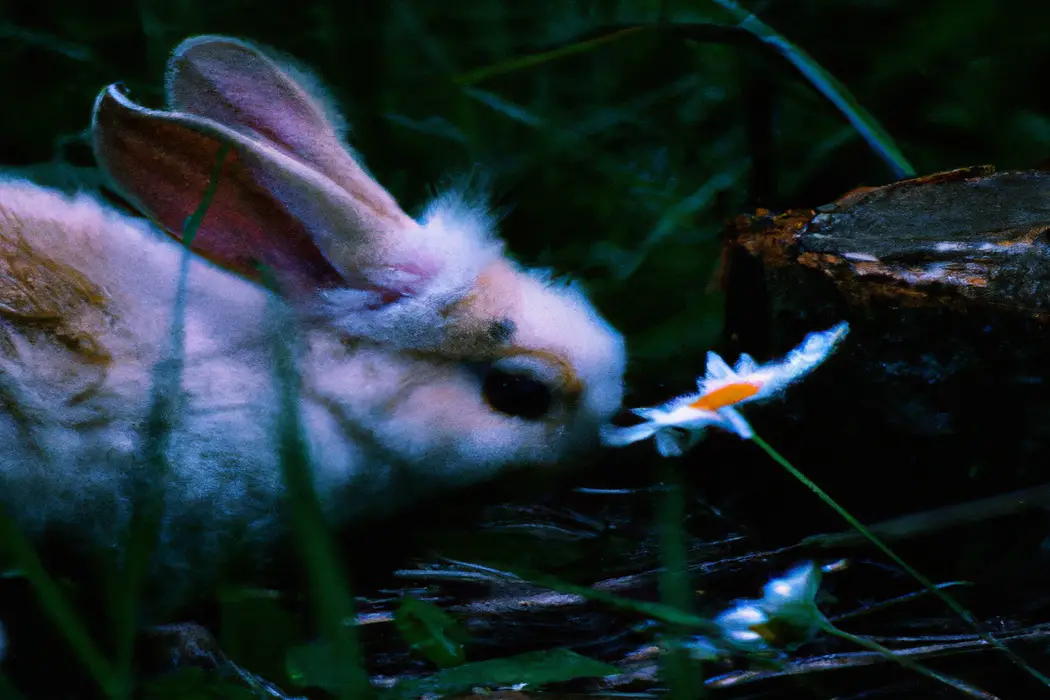
Insulating the Rabbit Hutch for Winter
Insulating the Rabbit Hutch for Winter:
- Use insulating materials such as straw, hay, or blankets to line the interior of the hutch. This will provide extra warmth for your rabbits.
- Ensure that the hutch is well-ventilated to prevent condensation and humidity buildup, which can be harmful to your rabbits.
- Use a waterproof cover for the hutch to protect it from rain, snow, and wind. This will help maintain a comfortable temperature inside.
- Consider placing the hutch in a sheltered area, away from direct drafts or extreme weather conditions.
- Regularly check the insulation and make any necessary adjustments throughout the winter season. Your rabbits’ comfort and well-being are important!
Remember to prioritize your rabbits’ safety and comfort by providing them with a warm and cozy hutch during winter. Stay attentive and make necessary adjustments as needed.
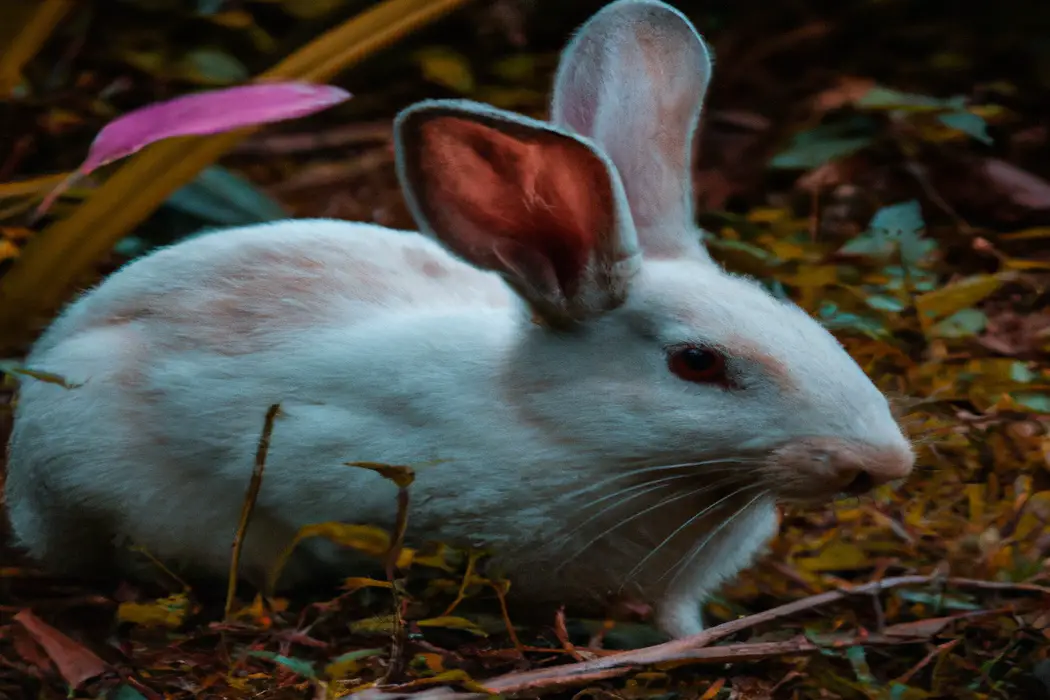
Providing Adequate Bedding for Warmth
When it comes to keeping rabbits warm in winter, providing adequate bedding is essential.
Here are some tips on choosing the right bedding for warmth:
- Use straw or hay as the main bedding material to create insulation and trap heat.
- Avoid using cedar or pine shavings, as they can be harmful to rabbits’ respiratory systems.
- Layer the bedding to create depth and maximize warmth.
- Monitor the bedding regularly to ensure it stays dry and clean.
Remember, proper bedding is crucial in creating a warm and cozy shelter for your rabbits during the winter months.
Feeding Properly for Winter
During the winter months, it’s important to adjust your rabbit’s diet, increase their hay and fiber intake, and offer warm water and fresh vegetables to ensure they stay properly fed and nourished.
Adjusting Rabbit’s Diet for Cold Weather
To adjust your rabbit’s diet for cold weather, you can incorporate these simple steps:
- Hay, hay, hay: Increase the amount of quality hay in your rabbit’s diet. It provides essential warmth and keeps their digestive system working effectively.
- Fresh greens: Continue to offer fresh greens, but be mindful of the cold temperatures. Opt for vegetables that are less watery and more warming, like kale or broccoli.
- Warm treats: Treat your rabbit to warm goodies, such as warm oatmeal or herbal teas. Make sure to cool them down before serving, and avoid sugary treats.
- Water check: Monitor your rabbit’s water supply regularly, as it can freeze in low temperatures. Offer warm water a few times a day to keep your furry friend hydrated.
- Consult your vet: If you have any concerns or questions about your rabbit’s diet in winter, don’t hesitate to reach out to your veterinarian for advice tailored to your rabbit’s specific needs.
Increasing Hay and Fiber Intake
To increase your rabbit’s hay and fiber intake, make sure to provide fresh hay on a daily basis.
Place the hay in areas where your rabbit can easily access it.
Additionally, you can offer your rabbit fibrous vegetables like kale, broccoli, and dandelion greens as a healthy treat.
Remember to gradually introduce any new foods to prevent digestive upset.
By ensuring a high hay and fiber intake, you’ll keep your rabbit’s digestive system healthy during the winter months.
Offering Warm Water and Fresh Vegetables
During the winter months, it is important to offer your rabbit warm water and fresh vegetables.
Cold water can lower their body temperature, so make sure to provide them with water that is not too cold.
Meanwhile, fresh vegetables are a great source of hydration and essential nutrients.
You can offer leafy greens like kale or romaine lettuce, as well as carrots and celery.
Remember to check the water and replace it if it gets too cold or frozen.
Protecting Rabbits from Cold Winds
Protect your rabbits from cold winds by using windbreaks and placing their hutch in a sheltered area.
Using Windbreaks and Shields
Using windbreaks and shields can provide effective protection for rabbits from cold winds.
Placing a windbreak or shield around their outdoor enclosure can help create a barrier against the chilling breezes.
You can use materials like wood panels, tarps, or even straw bales to construct these protective barriers.
Additionally, positioning the enclosure in an area that is naturally shielded, such as near a sturdy fence or wall, can also offer some relief from the wind.
Always ensure that there is proper ventilation to prevent condensation and maintain a healthy environment for your rabbits.
Placing the Hutch in a Sheltered Area
When placing your rabbit’s hutch, it’s important to choose a sheltered area.
This will help protect your rabbit from cold winds and extreme weather conditions.
Find a spot that is shielded from direct drafts and strong gusts of wind.
You can place the hutch against a wall or position it in a corner to provide extra protection.
Additionally, consider using windbreakers or covers to further shield the hutch from any chilly drafts.
Extra Tips for Keeping Rabbits Warm in Winter
Extra Tips for Keeping Rabbits Warm in Winter
- Providing Warmth with Snuggle Safe or Heat Lamps.
- Monitoring and Adjusting for Optimal Temperature.
- Regular Checkups and Observation of Rabbit’s Behavior.
Providing Warmth with Snuggle Safe or Heat Lamps
To provide warmth for your rabbits during winter, you can use either a Snuggle Safe or heat lamps.
With a Snuggle Safe, you simply heat it up in the microwave and place it in the rabbit’s sleeping area.
It provides a safe and cozy heat source for several hours.
Heat lamps, on the other hand, are great for outdoor hutches.
Position the lamp above the hutch, ensuring it is secure and won’t fall.
Make sure to provide a warm but not overheating environment.
Remember to monitor the temperature regularly and adjust accordingly for your bunny’s comfort.
Monitoring and Adjusting for Optimal Temperature
To ensure your rabbit stays warm in the winter, it’s important to monitor and adjust the temperature as needed.
Keep an eye on the weather forecast and make sure your rabbit’s hutch or enclosure is sheltered from rain, wind, and extreme cold.
Provide extra bedding such as straw or hay for insulation.
If necessary, consider using heat lamps or blankets designed for small animals.
Regularly check your rabbit’s body temperature and behavior to ensure they are comfortable and warm.
Adjustments may be needed based on their individual needs and the conditions outside.
Regular Checkups and Observation of Rabbit’s Behavior
Regular checkups and observing your rabbit’s behavior are essential for ensuring their health and well-being.
By scheduling regular visits with a veterinarian who specializes in rabbits, you can catch any potential issues early on and prevent them from becoming more serious.
Additionally, observing your rabbit’s behavior on a daily basis allows you to notice any changes or abnormalities, which may indicate illness or discomfort.
Pay attention to their eating, drinking, grooming, and activity levels.
If you notice anything out of the ordinary, contact your veterinarian for further advice.
Frequently Asked Questions
Can rabbits stay outside in winter?
Yes, rabbits can stay outside in winter, but it’s important to make sure they have proper shelter and protection.
Rabbits can tolerate cold temperatures, but they are susceptible to hypothermia and frostbite.
Provide them with a cozy, insulated hutch or shelter that is elevated off the ground.
Add extra bedding and cover the hutch with a waterproof material to keep out the wind and moisture.
Also, ensure they have access to fresh water that doesn’t freeze.
Regularly check on their well-being and make sure they are safe and warm.
What temperature is too cold for rabbits?
Rabbits are sensitive to the cold, so it’s important to ensure they stay warm during winter.
As a general rule, a temperature below freezing (32°F or 0°C) is too cold for rabbits.
They are susceptible to hypothermia and frostbite in these conditions.
It’s crucial to provide them with a safe, insulated shelter and bedding to keep them warm.
Additional measures like using heat lamps or heated pads can also help maintain a suitable temperature for your rabbits.
Regularly monitoring the temperature and making necessary adjustments is key to keeping them comfortable and healthy.
Are there any winter clothing options for rabbits?
Yes, there are winter clothing options available for rabbits to help keep them warm during the colder months.
These options include:
- Sweaters or jumpers: These can provide an extra layer of insulation and warmth for your rabbit.
- Snuggle sacks or blankets: These can be placed in your rabbit’s enclosure for them to burrow into and stay cozy.
- Waterproof jackets: These can protect your rabbit from rain or snow, keeping them dry and warm.
It’s important to ensure that the clothing is not too tight or restrictive, and that your rabbit is comfortable and able to move freely.
Remember to consult with a veterinarian or rabbit specialist for recommendations specific to your pet.
Final Verdict
It is crucial to keep rabbits warm in winter when they are kept outside.
Cold temperatures can pose serious risks to their health and well-being.
By creating a warm shelter with the right outdoor hutch and proper insulation, providing adequate bedding and adjusting their diet, and protecting them from cold winds, we can help keep our furry friends safe and comfortable throughout the winter months.
Additionally, providing extra warmth with snuggle safe or heat lamps, monitoring the temperature regularly, and observing their behavior are essential practices.
Remember, a little extra care and attention can go a long way in ensuring the well-being of our beloved rabbits during the winter season.

